John Elderfield and Elizabeth Smith
John Elderfield and Elizabeth Smith discuss the paintings of Helen Frankenthaler on the occasion of Helen Frankenthaler: Composing with Color, Paintings 1962–1963.
Gagosian is pleased to present its first exhibition of Helen Frankenthaler’s work organized in collaboration with the newly established Helen Frankenthaler Foundation. This follows the gallery’s critically acclaimed 2013 exhibition, Painted on 21st Street: Helen Frankenthaler from 1950 to 1959, which was organized with the artist’s estate.
The exhibition focuses on a brief but critical period in Frankenthaler’s career—in 1962 and 1963—when she “composed with color” rather than with line, resulting in the freer compositions that came to exemplify her long and prolific career. Transitioning from the sparer, more graphic works of 1960 and 1961, Frankenthaler made paintings that more readily filled the space of the canvas, moving toward what critic B. H. Friedman described as the “total color image” that would become a hallmark of her later work. Included in the exhibition are Cloud Bank, Hommage à M.L., and Cool Summer (all 1962), in which she employed a limited number of linear elements, linking them to her innovative stain paintings of the 1950s while marking a new direction with the use of spreading areas of color and a reassessment of the properties of painting materials.
Three paintings in the exhibition—Filter, Gulf Stream, and Moat (all 1963)—belong to a series of works that include imprints of the floorboards of Frankenthaler’s studio. As she recalled of this technique, “I did a whole series of pictures . . . that I reversed; in other words they stained through and then I worked on them again from the other side.” During this period, Frankenthaler also began experimenting with acrylic paint, sometimes employing both acrylic and oil in a single canvas. Gulf Stream, one example of this method, features delicately layered passages of oil paint surrounded by denser expanses of vivid acrylic paint, a framing device that she would continue to explore the following year.
The culmination of Frankenthaler’s experimentation with acrylic paint is represented by two large-scale paintings, Pink Lady and Sun Shapes (both 1963). With their large expanses of intense hues that nearly fill the canvas, both paintings anticipate the development of her abstract vocabulary throughout the remaining years of the 1960s.
The exhibition, curated by John Elderfield, is accompanied by a fully illustrated catalogue with an introductory essay by Elizabeth Smith, executive director of the Helen Frankenthaler Foundation. The essay provides an in-depth examination of Frankenthaler’s development during this critical two-year period and places these works within the context of American art in the early 1960s.
John Elderfield and Elizabeth Smith discuss the paintings of Helen Frankenthaler on the occasion of Helen Frankenthaler: Composing with Color, Paintings 1962–1963.
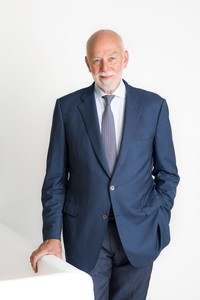
Richard Armstrong, director emeritus of the Solomon R. Guggenheim Museum and Foundation, joins the Quarterly’s Alison McDonald to discuss his election to the board of the Helen Frankenthaler Foundation, as well as the changing priorities and strategies of museums, foundations, and curators. He reflects on his various roles within museums and recounts his first meeting with Frankenthaler.
In conjunction with the exhibition Drawing within Nature: Paintings from the 1990s at Gagosian in New York, Carol Armstrong and John Elderfield discuss Helen Frankenthaler’s paintings and large-scale works on paper dating from 1990 to 1995.
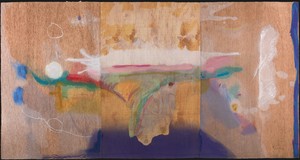
Inspired by the recent retrospective of Helen Frankenthaler’s woodcuts at the Dulwich Picture Gallery, London, William Davie writes about the artist’s innovative journey with printmaking. Davie illuminates Frankenthaler’s formative collaborations with master printers Tatyana Grosman and Kenneth Tyler.
Broadcaster and art historian Katy Hessel; Matthew Holman, associate lecturer in English at University College London; and Eleanor Nairne, curator at the Barbican Art Gallery, London, discuss Helen Frankenthaler’s early training, the development of her signature soak-stain technique and subsequent shifts in style, and her connections to the London art world.
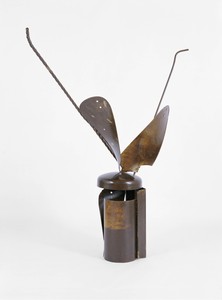
On the occasion of four exhibitions in London exploring different aspects of Helen Frankenthaler’s work, Lauren Mahony introduces texts by the sculptor Anthony Caro and by the artist herself on her relatively unfamiliar first body of sculpture, made in the summer of 1972 in Caro’s London studio.
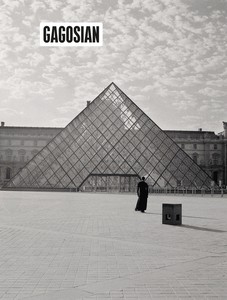
The Summer 2021 issue of Gagosian Quarterly is now available, featuring Carrie Mae Weems’s The Louvre (2006) on its cover.
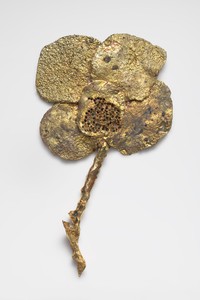
As spring approaches in the Northern Hemisphere, Sydney Stutterheim reflects on the iconography and symbolism of the season in art both past and present.
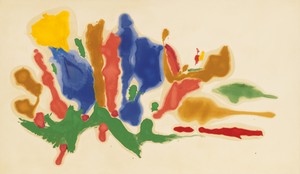
The Quarterly’s Alison McDonald speaks with Clifford Ross, Frederick J. Iseman, and Dr. Lise Motherwell, members of the board of directors of the Helen Frankenthaler Foundation, and Elizabeth Smith, executive director, about the foundation’s decision to establish a multiyear initiative dedicated to providing $5 million in covid-19 relief for artists and arts professionals.
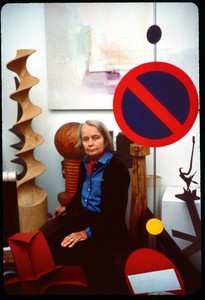
Wyatt Allgeier pays homage to the renowned gallerist and artist Betty Parsons (1900–1982).
Lise Motherwell, a stepdaughter of Helen Frankenthaler and vice president of the Helen Frankenthaler Foundation, and Elizabeth Smith, executive director of the Foundation, recently cocurated an exhibition of the artist’s work entitled Abstract Climates: Helen Frankenthaler in Provincetown. Here they discuss the origin of the exhibition, the relationship between the artist’s work and her summers spent in Provincetown, and the presentations at the Provincetown Art Association and Museum, in 2018, and the Parrish Art Museum, Water Mill, New York, in 2019.
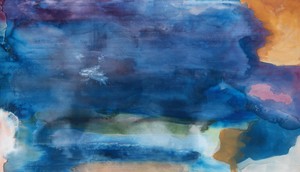
On the occasion of the exhibition Pittura/Panorama: Paintings by Helen Frankenthaler, 1952–1992, at the Museo di Palazzo Grimani in Venice, Italy, art historians John Elderfield and Pepe Karmel discuss the concept of the panorama in relation to the artist’s work. Their conversation traces developments in Frankenthaler’s approach to composition, the boundaries and conventions of abstraction, and how, in many ways, her career continually challenged established theories of art history.
Pittura/Panorama: Paintings by Helen Frankenthaler, 1952–1992 marks the first time that Frankenthaler’s paintings have been exhibited in Venice since her inclusion in the 1966 Biennale as part of the US Pavilion. This video, including interviews with the show’s curator, John Elderfield; the chairman of the Helen Frankenthaler Foundation, Clifford Ross; and the Foundation’s executive director, Elizabeth Smith, provides viewers with an in-depth look at the fourteen paintings included in the exhibition.
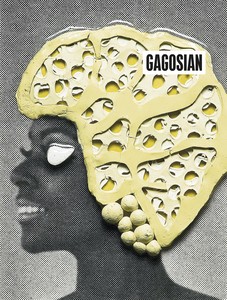
The Summer 2019 issue of Gagosian Quarterly is now available, featuring a detail from Afrylic by Ellen Gallagher on its cover.
Elizabeth Smith, executive director of the Helen Frankenthaler Foundation, and curator John Elderfield discuss a decade of Frankenthaler’s work on the occasion of her first exhibition of paintings in Rome.
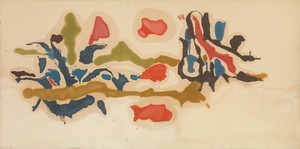
John Elderfield shares part of his lecture, prepared on the occasion of the exhibition Abstract Climates: Helen Frankenthaler in Provincetown.
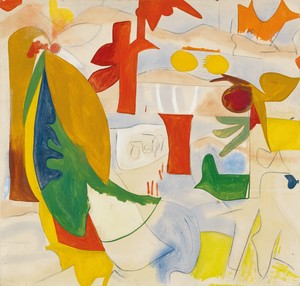
Phyllis Tuchman on the critical role of scale in Frankenthaler’s art practice.
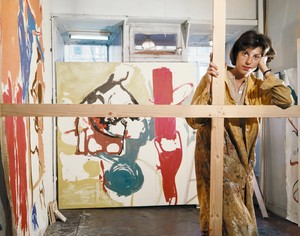
John Elderfield and Lauren Mahony discuss Helen Frankenthaler and her work from 1959 to 1962.
To mark the occasion of the exhibition Line into Color, Color into Line: Helen Frankenthaler, Paintings, 1962–1987, the Helen Frankenthaler Foundation and Gagosian produced a video of rare archival footage of Frankenthaler on the subject of line and color.
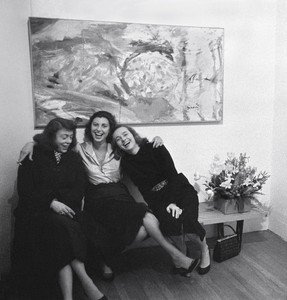
Art historian Katy Siegel discusses her recent exhibition at the Rose Art Museum and publication “The heroine Paint”: After Frankenthaler with Gagosian’s Alison McDonald.